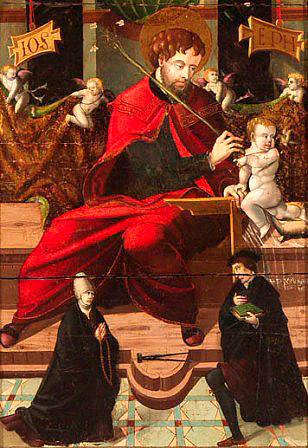30 August 2016
Tudela's workshops: architecture, visual arts and decorative arts
Artistic guilds during the Ancien Régime
D. Eduardo Morales Solchaga
Chair of Navarrese Heritage and Art
The goal of the lecture consisted of setting up a substrate in which to contextualise the two subsequent interventions on the Tudela workshops during the Renaissance and the Baroque periods. The origin and common link between them is the context in which they were able to develop, the craft industry monopolised by the guilds during the Ancien Régime.
First of all, the chosen degree scroll was explained in detail, from the political, economic and social division of the Ancien Régime to the concept of the guild, differentiating between the so-called mechanical and artistic trades.
The more purely professional facets of the guilds were then described, with special emphasis on the ordinances. The disciplines, the curriculum towards mastery, the titles, the organization chart of the guilds, etc. were extracted from them. Particularly important were the sections concerning the monopoly of raw subject materials, prices, and quality control. Also, data was provided on some equally important aspects such as internal regulations, fines and the seats they occupied.
This was followed by the purely religious functions, starting with the invocations they chose for their protection. data accredited specialization In this regard, interesting information was provided on the celebrations ad intra (festivities, interannual masses and funerals) and ad extra (processions, rogations, commemorations, funerals, etc.). Special mention should be made of the section dedicated to the chapels erected by these confraternities.
Next, the welfare functions were also dealt with, using the same structure ad intra (sick, widows, displacements and montepios) and ad extra, differentiating between specific personalities, such as pilgrims or foundlings, and official institutions, such as town halls, municipalities and the Crown.
Finally, and to conclude the presentation, the decline of the guilds in the 18th and 19th centuries was contextualised, focusing on Spanish territory. Bourbon centralism, the gradual secularisation of society, the Enlightenment reforms, disentailments and wars were some of the factors dealt with, culminating in the configuration of the Liberal State (Cortes de Cádiz and the Royal Statute of 1834), in which these institutions of medieval origin had no place.

Altarpiece of Saint Joseph
Sacristy of the chapel of the Holy Spirit
Tudela Cathedral
